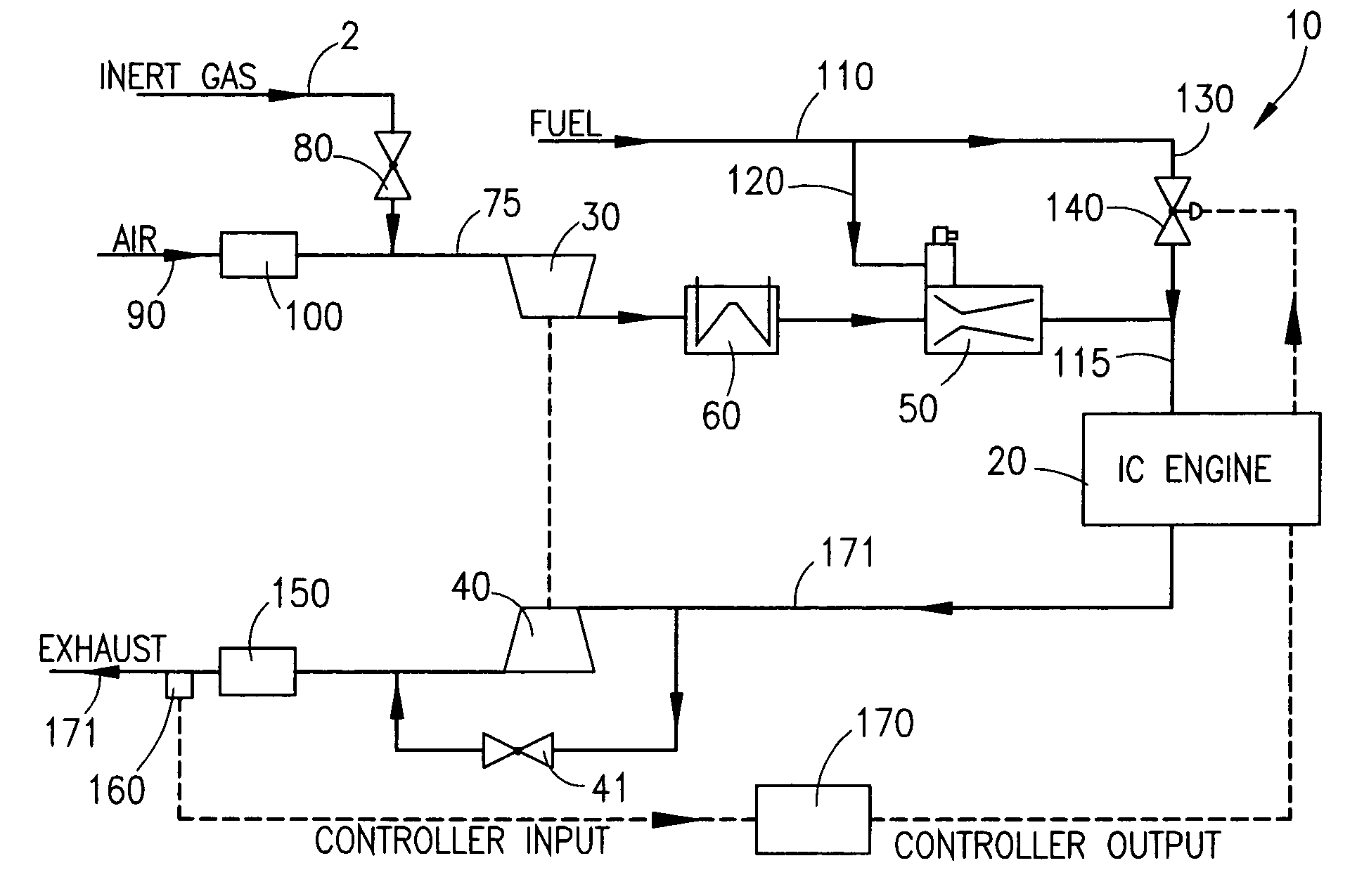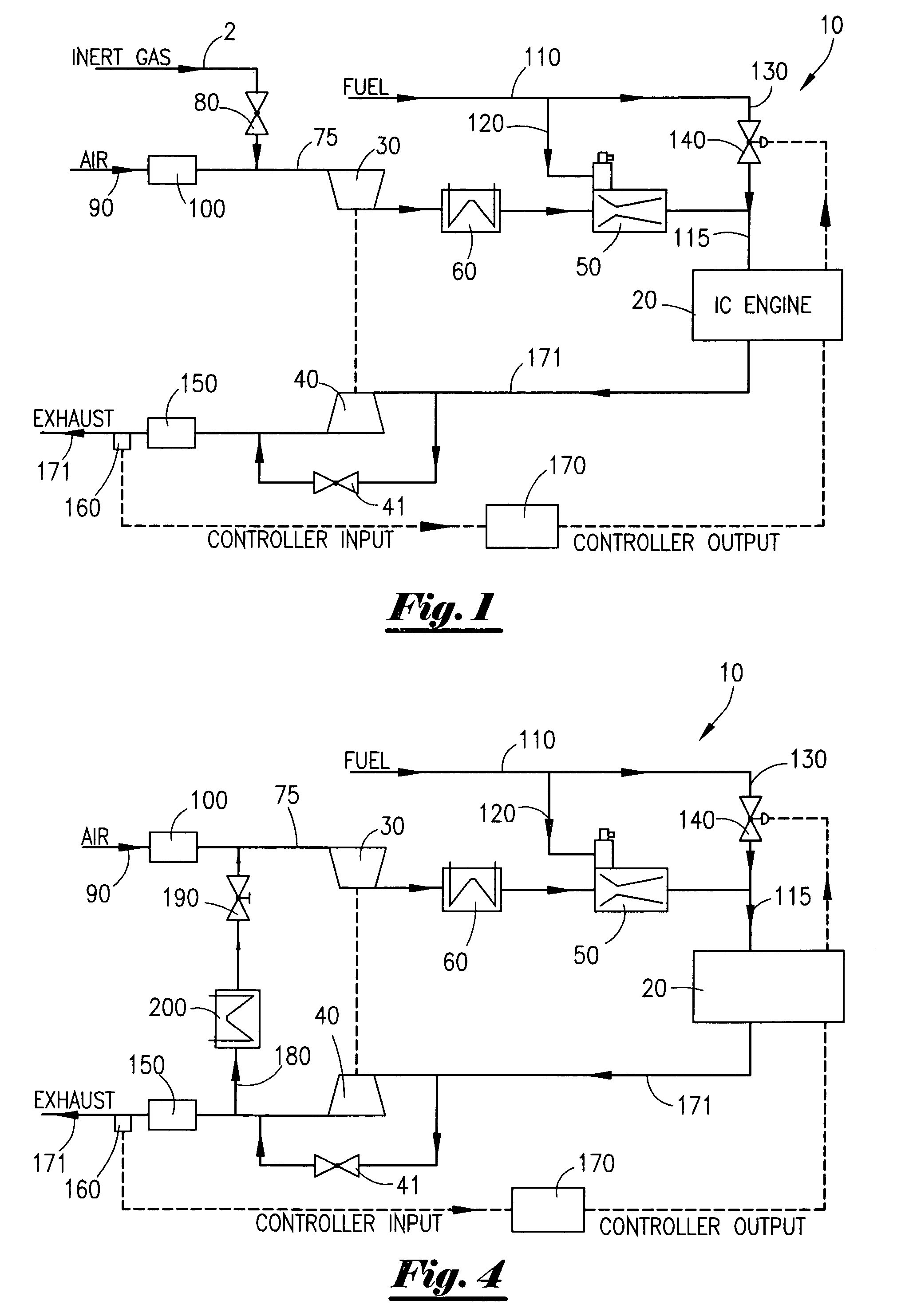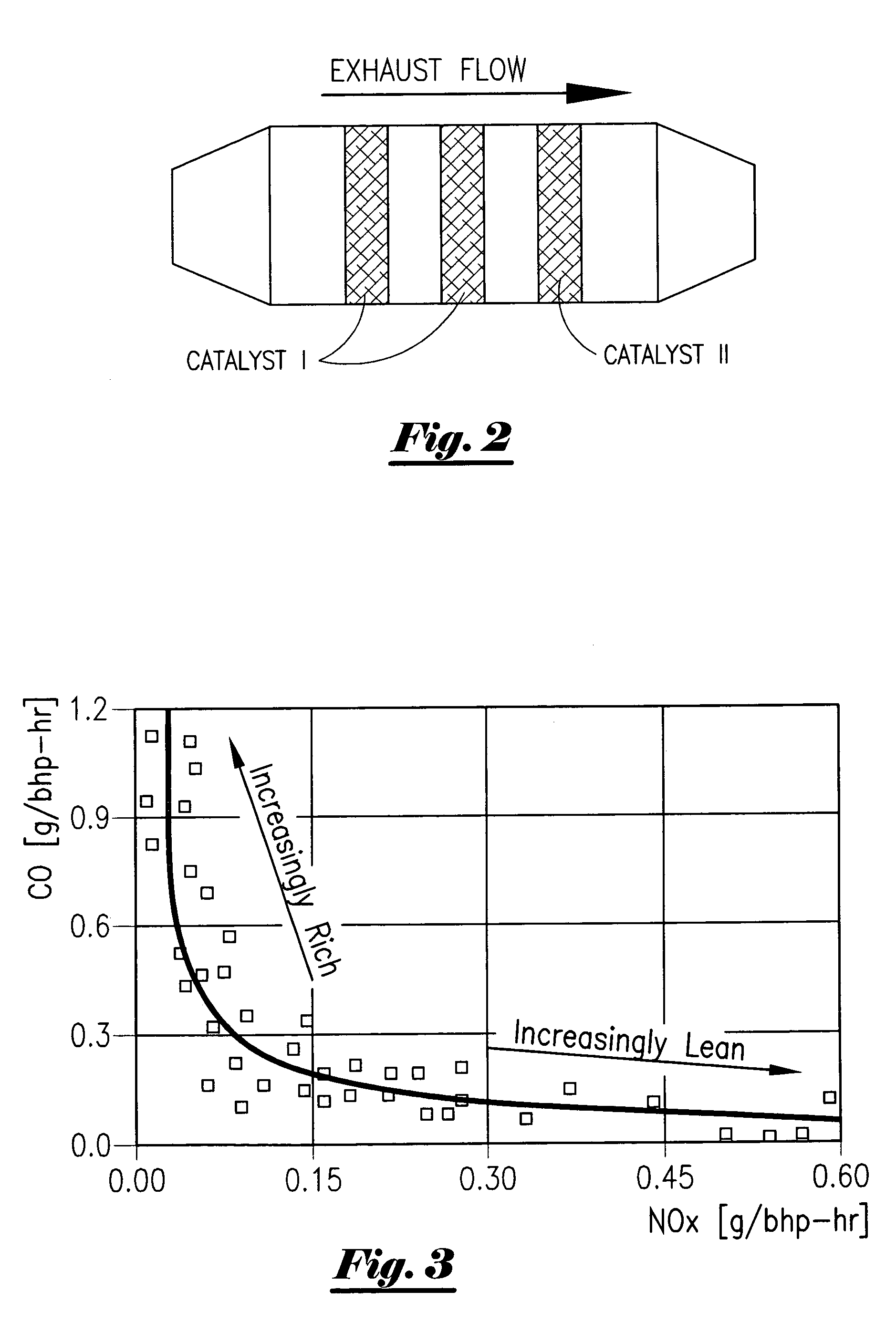High efficiency, reduced emissions internal combustion engine system, especially suitable for gaseous fuels
a technology of internal combustion engine and gaseous fuel, which is applied in the field of internal combustion engine systems, can solve the problems of inability to achieve a perfect combustion cycle, contribute to air pollution, and relatively low compression ratio, and achieve the effects of reducing emissions, increasing fuel conversion or operational efficiency, and high compression ratio
- Summary
- Abstract
- Description
- Claims
- Application Information
AI Technical Summary
Benefits of technology
Problems solved by technology
Method used
Image
Examples
Embodiment Construction
[0023]While the present invention may take various embodiments, with reference to the drawings some of the presently preferred embodiments are now described. It is understood that those skilled in the relevant art field will recognize that the scope of the invention encompasses not only the embodiments set out, but alternate embodiments as well.
[0024]With reference to the drawings, especially FIG. 1, one presently preferred embodiment of the IC engine system 10 comprises an IC (internal combustion) engine 20, which receives an air / inert gas / fuel mixture through composite influent line 115. Engine 20 may be of a configuration and size appropriate for the desired application. For example, engines of widely varying numbers of cylinders, power output, and cylinder arrangement can be used. Engine 20 is capable of operating at compression ratios higher than typical stoichiometric combustion cycles. By way of example only, compression ratios of 12 or more permit increased fuel conversion o...
PUM
 Login to View More
Login to View More Abstract
Description
Claims
Application Information
 Login to View More
Login to View More - R&D
- Intellectual Property
- Life Sciences
- Materials
- Tech Scout
- Unparalleled Data Quality
- Higher Quality Content
- 60% Fewer Hallucinations
Browse by: Latest US Patents, China's latest patents, Technical Efficacy Thesaurus, Application Domain, Technology Topic, Popular Technical Reports.
© 2025 PatSnap. All rights reserved.Legal|Privacy policy|Modern Slavery Act Transparency Statement|Sitemap|About US| Contact US: help@patsnap.com



